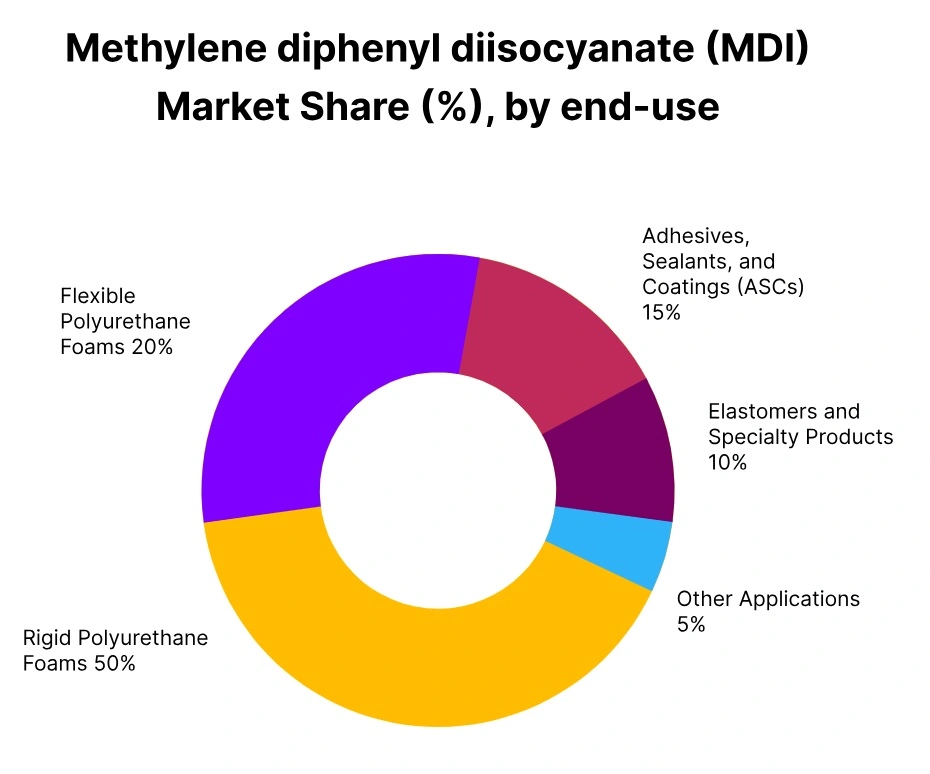Price-Watch’s most active coverage of Methylene Diphenyl Diisocyanate (MDI) price assessment:
- Polymeric FOB Shanghai, China
- Polymeric FOB Yokohama, Japan
- Polymeric FOB Jeddah, Saudi Arabia
- Polymeric FOB Busan, South Korea
- Polymeric CIF JNPT_South Korea, India
- Polymeric CIF Mersin_China, Turkey
- Polymeric CIF Haiphong_China, Vietnam
- Polymeric Ex-Mumbai, India
- Polymeric CIF Santos_South Korea, Brazil
Methylene Diphenyl Diisocyanate (MDI) Price Trend Q3 2025
In Q3 2025, the global Methylene Polymeric MDI market experienced a mild downward trend, with prices declining by 1–5%. The decrease was primarily influenced by moderate softening in feedstock aniline and formaldehyde costs, coupled with restrained demand from downstream polyurethane (PU) foam, adhesives, and coatings sectors. While production levels at major plants remained stable, elevated inventories in key regions and restrained purchasing activity among end-users exerted slight pressure on market sentiment.
China
Methylene Diphenyl Diisocyanate (MDI) Export prices FOB Shanghai, China, Grade- Polymeric.
According to Price-Watch, in Q3 2025, Methylene Diphenyl Diisocyanate (MDI) prices in China showed a slight downward movement, with MDI prices in September 2025 falling between USD 1900–2050/MT on an FOB China basis. The Methylene Diphenyl Diisocyanate (MDI) price trend in China was influenced by moderate fluctuations in feedstock aniline and formaldehyde costs, alongside stable operating rates at major domestic production facilities.
Quieter demand from downstream polyurethane (PU) foam, adhesives, and coatings sectors exerted mild pressure on market sentiment. Regardless of these challenges, balanced supply conditions and steady export activity helped prevent sharper declines.
Japan
Methylene Diphenyl Diisocyanate (MDI) Export prices FOB Yokohama, Japan, Grade- Polymeric.
In Q3 2025, Methylene Diphenyl Diisocyanate (MDI) prices in Japan showed a slight downward movement, with MDI prices in September 2025 ranging between USD 1750–1900/MT on an FOB Japan basis.
The MDI price trend in Japan was swayed by moderate fluctuations in feedstock aniline and formaldehyde costs, alongside steady operating rates at key domestic production facilities. Less demand from downstream polyurethane (PU) foam, adhesives, and coatings sectors exerted mild pressure on market sentiment.
Saudi Arabia
Methylene Diphenyl Diisocyanate (MDI) Export prices FOB Jeddah, Saudi Arabia, Grade- Polymeric.
In Q3 2025, Methylene Diphenyl Diisocyanate (MDI) prices in Saudi Arabia displayed a slight downward movement, with MDI prices in September 2025 USD 1600–1750/MT on an FOB Saudi Arabia basis. The Methylene Diphenyl Diisocyanate (MDI) price trend in Saudi Arabia was influenced by moderate fluctuations in feedstock aniline and formaldehyde costs, alongside stable operating rates at major domestic production facilities. Less demand from downstream polyurethane (PU) foam, adhesives, and coatings sectors put mild pressure on market sentiment.
South Korea
Methylene Diphenyl Diisocyanate (MDI) Export prices FOB Busan, South Korea, Grade- Polymeric.
In Q3 2025, Methylene Diphenyl Diisocyanate (MDI) prices in South Korea displayed a slight downward movement, with MDI prices in September 2025 USD 1650–1800/MT on an FOB South Korea basis. The Methylene Diphenyl Diisocyanate (MDI) price trend in South Korea was swayed by slight fluctuations in feedstock aniline and formaldehyde costs, alongside stable operating rates at key domestic production facilities. less demand from downstream polyurethane (PU) foam, adhesives, and coatings sectors exerted mild pressure on market sentiment.
India
Methylene Diphenyl Diisocyanate (MDI) import prices CIF JNPT, India, Grade- Polymeric.
In Q3 2025, Methylene Diphenyl Diisocyanate (MDI) imports into India saw a mild downward trend, influenced largely by feedstock fluctuations and global supply adjustments. MDI prices in September 2025 ranged between USD 1750–1900/MT for South Korea imports and USD 2000–2200/MT for China imports on a CIF India basis.
The Methylene Diphenyl Diisocyanate (MDI) price trend in India was shaped by moderate changes in aniline and formaldehyde costs, alongside steady operating rates at key Asian production hubs. Softer domestic demand from downstream polyurethane (PU) foam, adhesives, and coatings sectors, coupled with steady import volumes, exerted mild downward pressure on market sentiment.
Turkey
Methylene Diphenyl Diisocyanate (MDI) import prices CIF Izmir, Turkey, Grade- Industrial Grade.
According to Price-Watch, In Q3 2025, Methylene Diphenyl Diisocyanate (MDI) imports into Turkey showed a slight downward movement, with MDI prices in September 2025 ranging between USD 2000–2200/MT on a CIF Turkey basis. The Methylene Diphenyl Diisocyanate (MDI) price trend in Turkey was influenced by moderate fluctuations in feedstock aniline and formaldehyde costs, alongside stable operating rates at major Asian production hubs. Quieter demand from downstream polyurethane (PU) foam, adhesives, and coatings sectors, added with steady import inflows, exerted mild pressure on market sentiment.
Vietnam
Methylene Diphenyl Diisocyanate (MDI) import prices CIF Haiphong, Vietnam, Grade- Industrial Grade.
In Q3 2025, Methylene Diphenyl Diisocyanate (MDI) imports into Turkey from China displayed a light downward movement, with MDI prices imported from China in September 2025 ranging between USD 2000–2200/MT on a CIF Turkey basis.
The Methylene Diphenyl Diisocyanate (MDI) price trend in Turkey was moved by moderate fluctuations in feedstock aniline and formaldehyde costs, alongside stable operating rates at major Chinese production hubs. Softer demand from downstream polyurethane (PU) foam, adhesives, and coatings sectors, coupled with steady import inflows, exerted some pressure on market sentiment.
Brazil
Methylene Diphenyl Diisocyanate (MDI) import prices CIF Santos, Brazil, Grade- Industrial Grade.
In Q3 2025, Methylene Diphenyl Diisocyanate (MDI) imports into Brazil from China showed a slight downward movement, with MDI prices imported from China in September 2025 ranging between USD 1800–1950/MT on a CIF Brazil basis.
The Methylene Diphenyl Diisocyanate (MDI) price trend in Brazil was influenced by moderate fluctuations in feedstock aniline and formaldehyde costs, alongside stable operating rates at major Chinese production hubs. Less demand from downstream polyurethane (PU) foam, adhesives, and coatings sectors, together with steady import inflows, exerted mild pressure on market sentiment.








